
Broad Church
Even with a new guitarist, their 25th studio album Further/Deeper sees The Church acting and sounding Church-ier than ever.

Artist: The Church
Album: Further/Deeper
Photos: Malcolm Viles
Tim Powles, drummer of The Church, can talk. He enthusiastically rambles about their latest record, not really sure where the conversation’s heading, pausing every now and again to go back and flesh out the detail. It’s really similar to how The Church makes records. There’s no pre-cognitive vision, no grand concept for the album; it’s just five guys in a room, loosening the screws on their consciousness and picking out the cherries that rise to the top.
Being a producer for the band means you have to just be willing to go with the flow — rock up, write songs on the fly, record in chunks and piece it all together as you go. Luckily Powles, who doubles as the band’s main producer, is along for the ride anyway. “We don’t plan a lot, we don’t sit around and pre-conceive things with any of the records,” said Powles. “And the only difference with the current record was Marty Wilson Piper decided he wouldn’t be involved.”
Which is a big change in such a musically democratic band. For some fans, it was devastating, but for Powles, who’d been hearing Piper in his left ear for years, it was like altering half the stereo field of his performance life. He had no idea if what ex-Powderfinger guitarist, Ian Haug, was going to send spiralling down his left cochlear would balance his image of The Church.
The record is Further/Deeper, their 25th studio album. And it shows the improvised jamming methodology still works. If anything, it cuts down the possibility of the contrived song craft that can plague established bands.
After a couple of years of being “at each other’s throats” — with Piper leaving the band and Kilbey threatening to call it quits in the fallout — heading back into Powles’ smallish Spacejunk studio seemed like a bad idea; too claustrophobic. For a change of scenery, Powles rang Rancom St Studios’ owner Garth Porter and engineer Ted Howard to see if they’d be willing to house The Church in a couple of blocks over four weeks.
STAGE 1: JAMMING IT ALL IN
“The initial plan was to jam some songs, then come back and cut them properly,” said Howard. “But it was pretty apparent by the end of the first day that we were keeping everything — jamming and tracking being one process. It was very different. I’m used to people coming in with demos to play to a session band, or charts, or bands that come in rehearsed, because it’s expensive. These guys coming in and starting a song with a riff, groove or even just a sound, was fascinating.”
“We’re getting these jams down with a view that retrospectively any could become the bed for a song,” said Powles. “And that they then need to be mixed to a point worthy of critical ears. For the engineer, it’s all happening at once, you’re racing around trying to get mix-worthy sounds while people are changing them on you, or shifting amps, or playing an entirely different instrument.”
It was a tough engineering gig; everything had to be set up and running at all times. Powles brought a monster of a custom-made Mapex kit comprising five toms, two kicks, a kick trigger, a couple of snares including his prized Sonor five and 3/4-inch steel snare, plenty of Meinl cymbals, and a Roland SPD-SX trigger/sampler; Koppes and Haug were switching up guitars and sounds with regularity; Kilbey moved between four-string basses and a Fender Bass VI, and dropped guide vocals at will; and there were three keys setups spread around the space.
They toyed with the idea of partitioning everyone off in the live room with a few baffles, but eventually settled on housing just the drums in there, placing the amps in isolation and everyone else in the control room. “It was nearly a two-day setup,” said Howard. “I really enjoyed it, but it was really challenging. I had 32 inputs of A/D going into Pro Tools, and every one was being used. I even had to bounce toms down to two tracks, which I hadn’t done since the analogue days. And Tim plays the toms as a main part of his grooves, not just fills, so I had to make sure the balances were okay going to a stereo pair. There were lots of quirky mics like the ceiling mic. And Tim’s talkback mic — a Turner S22D high impedance dynamic harp mic — got used quite a lot in my mixes as a pre-fade reverb send.”



According to Powles there were “two sets of room mics — a stereo room at around mid-distance, and what Ted calls ‘the roof’ — and an AEA ribbon up the front as well.”
Also, under Powles piano bench drum stool sat a 30W Ashton dual concentric drum machine amplifier that he ran some of the samples from his Roland SPD-SX through — either triggered from the pad, the external kick pedal trigger, and some from both snares and kicks via physical triggers. On Pride Before a Fall the verses use Snare 1 with electronic kick, recorded via the Shure SM7 over-the-shoulder mic, which is a standard at Powles’ Spacejunk studio. Then the choruses switch to Snare 2 and the 24-inch kick with a trigger in the background — there was a lot of flexibility in his kit setup.
Howard: “Sometimes we tracked the drums to ¼-inch Revox tape. I don’t like compressing the close mics too much on the way in, though I had some of the room mics slammed. I had a dbx 160VU on one of the kick mics, and I like to track with an ELI Distressor on the snare top mic, using a slow attack and fast release, more for the sound than to control the dynamic. I just approached it like any other kit, making sure I had good definition on the close mics as well as having all the ‘glue mics’ there.”
HAUG’S INDOCTRINATION
With no pre-production, Day One of the session was Haug’s first musical interaction as a member of The Church, and he wasn’t exactly sure what gear he should bring. So Powles suggested he check out the Strymon Big Sky reverb pedal, which landed at Rancom St on the opening day of recording and became a big part of his sound.
“In some of those earlier tracks he hadn’t really discovered the unit, but it was slapped on there,” said Powles. “We ended up having a bit of trouble when it came time to mix because everything was so far away through the Strymon reverb wall. But it was certainly really inspirational from a melodic, creative and sonic point of view. What Ian was bringing back into the band was a little bit of goth, and space, in a different way. He hung back a bit more, leaving more room for beats.” Which was perfect for Powles, feeling a freedom to swing grooves he hadn’t felt since taking over from Richard Ploog: “There’s a bit more swing, we’ve got a track in 7/8 that goes into 14 and 16 later, it’s great!”
Howard: “Peter Koppes splits his guitar signal across different amps — he had a Black Star, a Vox AC30, and an old Danelectro. Traditionally the Danelectro has been an effected amp, but we tended to use that for the tone and its beautiful vibrato. He’s also got his rack units a Digitech Harmonizer, and Roland DEP-5 and Sony DPS-V55 effects processors which act like a string machine, it sounds like a swirly, washy pad. I had probably five lines for Peter. I had two amps going for Haugy. I generally like to record both with tube preamps for a little bit of drive, but clarity you tend to get.”
At one time Kilbey used a bass amp (Kruger head and Ampeg box) but somewhere in the late ’90s the idea of touring with that and Koppes’ Leslie cabinet seemed like overkill. Ever since, Kilbey has used an original Sansamp, and always tracks a split of it alongside any amp signals. He plays either a Fender Jazz or Fender VI, with six strings, which he’s used for big chunks of the band’s career. “It’s got a different kind of emphasis,” reckons Powles. “Plus you can play chords and you’ve got the vibrato arm.”
On a handful of the tracks, Kilbey played bass lines on keyboards. Powles: “We did a bit of bass on my Yamaha E-tone organ. Sometimes he just played ambient Eno-esque gothic pads, and two or three of the tracks ended up with organ pedal bass. So it’s a real spread.” Also on hand was a piano, a Roland RS-202 string synth, and a Suzuki Q-Chord.
The main sessions were finished by the end of 2013, but in January, Kilbey was doing a show at the Coogee Surf Club with a string section and asked Powles to come up and play it. So he threw a 26-inch jazz bass drum, a couple of snares, and a floor tom into his car and went to the gig. When he rolled up to Rancom St the next day to listen back to some takes with Howard, he realised he wanted to redo the drums on Miami, Laurel Canyon, Delirious and one other song. The kit was still in his car, so he set up a whole new kit, which was essentially kick, snare, floor, and a 12 x 7-inch snare drum (with the snares turned off) which was used as a rack tom. Howard used a different mic setup to capture the stripped back kit, including an AKG D19 on the kick beater, a mono overhead, AKG414s on toms and a plate mic as a sympathetic resonator on the floor behind the kit.
But it was pretty apparent by the end of the first day that we were keeping everything — jamming and tracking being one process


I like the way those guys lose themselves in the studio, there’s nothing self-conscious about the way they approach it. It was a good place to go every day
STAGE 2: BEDDING DOWN
The pace was fairly fast, with 18 beds tracked in the first eight-day stint. By the end of the tracking sessions, there were 26 beds in numbered Pro Tools sessions, and the next stage was to start editing them into songs. Howard would pull a verse, a chorus and some solid sections, and try to patch together an edit to show the band. Without a click track, it meant timing discrepancies would sometimes put parts out of contention. Though only occasionally would he stray from making full band edits, “because we wanted to keep the spark,” said Howard. “But other times I’d have to cut and paste bits from an outtake.”
Once there were a body of rough cuts to work with, the team split in two. Howard used the control room to track guitar overdubs with Koppes and Haug, while Kilbey and Powles set up a control room in the live room; shifting in a couch, monitors, and Powles’ Apogee Symphony interface.
They re-commissioned a “little room off the back of that which Ted calls ‘Madagascar’,” said Powles. Just big enough to squeeze a drum kit in, it was plenty roomy for a vocal booth. Kilbey’s vocal chain was a Phoenix Audio preamp and one of the beta Mojave mics Dave Royer made before he started mass-producing them.
As well as recording vocals, the pair fined-tuned the arrangements in Logic, which Howard later replicated in Pro Tools. “On average, Steve and I were working on two songs a day,” said Powles. “We work off the beds and put some shape into things (if they didn’t already have the right shape), then have a guess at what bits might be a chorus, or even if the song was going to have choruses.”
Probably the most impressive element of The Church’s writing process is Kilbey’s ability to so effortlessly write and record the sort of lyrics and melodies arts students spend years dissecting in universities and online forums. “Steve just hangs on the couch and listens two or three times through, gets his lyric brain into gear, and at some point says, ‘Yep, gimme a go,’” said Powles. “I mean, that’s a generalisation, but often the very first thing he sings out loud will become the vocal and we may never better it.
“Other times there’s some reinvention, but they come very quickly. He’s particularly intuitive, and it’s very instinctive. On this one, I did push harder on that point, so we had a few battles. We had a great time doing this after we’d cleared the air between us. We had a lot of stuff go on in the band that wasn’t good, but somewhere in the first two or three weeks of making the album Steve and I had a fantastic dialogue going where we were utterly honest straight away, about everything. It was very a successful verbal push and pull. I think it’s the best we’ve ever been.
“Back when he was struggling with consuming stuff that was bad for him, his interests lay elsewhere. It was a weird relationship, a bit like somebody falling asleep in the backseat, waking up every now and then shouting out directions. It wasn’t always a happy ship and this time we’ve got the best out of the both of us. His ability to retrospectively create something that sounds like it was there in the first place is incredible.”
Howard concurred: “The thing that struck me was how quickly Steve came up with the lyrics. He’s genuinely an artist in that sense, and an original songwriter.
“I like the way those guys lose themselves in the studio, there’s nothing self-conscious about the way they approach it. They’re very at home in that environment. It was a good place to go every day.”

STAGE 3: MIXED BAG
If the tracking environment wasn’t democratic enough, the mixing process was like pulling together a United Nations summit. At first, the band were thinking of commissioning the go-to mixers of the moment; either Tchad Blake or David Fridmann. Bob Clearmountain’s name — he’d mixed their second record — was also thrown into the mix. But then they realised, “We’ve generally been DIY, so why should we suddenly change because we feel we need to?” recalled Powles. “Do we suddenly behave like a major label A&R guy and just grab at the latest person, or do we stick with what we’ve got and do it ourselves?
“Steve and I spoke a lot through this whole process. We both had different ideas on who should mix what. In the end we felt that in this day and age — when anyone can jump online, source a mixer and send their stuff overseas — it’s harder for local people to wave the flag and easier for them to be passed over than it was before.”
So they assembled a team of past and present mixers for The Church, including David Trumpmanis, who mixed their Opera House show and their 2006 record Uninvited Like The Clouds; Simon Polinksi, who’d made records with The Church and Kilbey for years; Tim Whitten mixed the opening track; and both Howard and Powles ended up contributing a few mixes themselves.
Powles: “Essentially the record’s mixed mostly in-the-box. My stuff all came out in four or five stereo pairs and was sometimes run through an SPL Transient Designer. Trumpy was largely in the box; Simon was totally in the box but some of the stems got taken out and mixed; and Ted uses the MCI console at Rancom St a bit.
POWLES’ MIX
Powles: “On the tracks I mixed, I used a lot of the Rancom St room mics. I made an old school parallel send and return system where I’d chuck Valley People Dynamite plug-ins or analogue compressors across the various rooms. Then I’d gate them and key the gate off an auxiliary send of the close mics, and play with the range and time. Effectively I’m duplicating what we used to do in the ’80s with the Kepex gate on a densely recorded room.
“I used a little plug-in called Sasquatch Kick Machine by Boz Digital Labs. It’s basically a tone-generator, like a finely developed Simmons drum module, because it’s not playing a sample. It’s generating noises and tones, and there’s three resonances and a great detection circuit. It’s fantastic on kicks, snares, toms, you name it. I used that and sent a link through to Ted and Trumpy who both used it as well.
“The other plug-in I discovered and used a lot was by a guy called Joey Sturgis who’s created this plug-in called Gain Reduction. It’s only $45 and it just smashes; the first knob in it is called Slay. It’s got a really cool-looking old interface on it with a piece of masking tape and a lo-fi switch and it’s just incredible for a bit of attitude, tone and vibe.
“On my refrain vocal on Pride Before a Fall, I used a combination of Fabfilter echo and filter plug-ins, as well as a tremolo, long delay and a narrow EQ. The refrain is all just jammed, written and recorded on the spot into my laptop mic one night after a few drinks around 3am. So much for high fidelity.
“There were plenty of random elements too. Ted’s son found an old piano by the road and recorded himself moving bits of the frame and strings on his phone. I flew it in as ambience at crucial spots in Globe Spinning.
“I printed my mixes through a tape machine too. I’ve got an MCI JH-24 but it’s got a 16-track block on it. Ted lined it up so I had a couple of tracks lined up hot and a couple lined up straight. I ended up vari-speeding in two or three of those as well.”
In the end we felt that in this day and age — when anyone can jump online, source a mixer and send their stuff overseas — it’s harder for local people to wave the flag and easier for them to be passed over than it was before

COMING UP TRUMPS
By his reckoning, Trumpy has been a part of almost every Church release for the last 15 years. But his last outing was a mix for their Sydney Opera House live show CD and DVD. It was a completely different kettle of fish — 24 songs, 5.1 releases, an orchestra with an extra harp and double bass. This album he mixed five tracks, one of which Howard finished off.
Trumpy: “We chatted about the individual tracks, and I referred to the rough mixes a lot, because there were texture in there Tim really liked, or parts I hadn’t heard.
“It’s a lush and dense record, with a lot of tracks, so you need to find some definition and clarity in there, otherwise it just becomes a washed out mess. The drums provide a sense of grounding and focus for this record, with everything else washing around it. Even the vocals are quite effected on this record.
“On many of the tracks Tim printed out wet, effected vocals alongside the dry ones. I generally start with a de-esser, because Steve is quite sibilant, then a bit of EQ, rolling off a lot of bottom end up to 2-300Hz. I used the Waves CLA-76 compressor plug-in and followed it with the R-Comp, and quite often used the Air plug-ins for chorusing and flanging to help the vocals float above the mix.
“Sometimes I used the SoundToys Devil-Loc to add mid-range presence to the vocals and help them cut through. Tim found the Gain Reduction plug-in too, which is just a variation on that idea of having a combination of dirt and compression, with a slight EQ as well.
These type of harmonic overdrive/compression plug-ins have become a staple on his mixes. Trumpy: “For bass I find the Digi Lo-Fi is good because it keeps the bottom end there, even adding a little. The Sansamp track has a little bit of tonal colour like a slightly driven amp, but never overdriven or distorted.”
For reverb, one of Trumpy’s favourites is Altiverb, using some of the EMT plate and spring reverb convolutions. “I used a combination of everything, there’s D-Verbs on there and Softube’s Tsar-1 reverb. For drums I typically use room reverbs, and I’d use the room mics in different ways for different songs, even sections. Some songs I didn’t use the rooms at all.
“On a few of these songs I started pulling all the guitars out, then they slowly got added back in. I started mixing Toy Head, and it had piano, great orchestral timpanis, but eventually the band brought the rock guitars back in there.
“On the tracks I had, Ian ended up playing more guitar than Pete. He’s obviously a very different player to Marty, but he ended up playing some similarly-styled arpeggiated picking and 12-string parts. He had lots of great parts.
“It was all really well recorded. There was a slight tonal darkness to it all. I’m not sure if that was the studio or Ted’s influence. I added a bit more sharpness and attack to the drums to combat that at points. On my mix bus I boosted at 16kHz, and here and there at 2-3kHz.
“I generally like to mix several songs at once so I can open and close sessions, and come back to them with a little bit of perspective. It took a lot of time to mix these tracks, probably about six weeks. There was a lot of back and forth, and there were some long songs too, which obviously adds to the length of time you work on them. You always do it for the love of it with The Church.”

HOWARD’S MIX
Howard ended up mixing a couple of the tracks himself, using Simon Polinski’s stems as a launching pad. He also “mixed one of the tracks by accident. It was meant for one of the other guys, but I was mucking around with it one day preparing the files and they ended up thinking it sounded pretty close and going with mine.
“It can be quite frightening and intimidating when you’re mixing an album with three other guys. You hear their work and think, ‘oh man, that sounds so good. How am I going to get mine to sound that good?’ But it was good. On Volkano I even finished off Trumpy’s mix using his session, because he’d run out of time. I love opening other engineer’s sessions, you always learn stuff. The way different people split their mixes, if they use VCAs, how many masters they have, whether or not they send everything to auxiliaries and EQ there or at the source channel.
“I was aware there had to be cohesion across the record, so there were times when something I was doing was too wet or not wet enough. But it was also about hearing something good and being inspired to try it too.”
STAGE 4: WILLING TRACKS TOGETHER
With four main mixers working on the record, the mastering job was always going to be a task of bringing a level of cohesion to the album. William Bowden was that guy: “The sound of the mixes differed; Tim’s had gone to tape and he favours a slightly more sepia-toned sound, Ted’s were much clearer and punchier, and Dave Trump was really more experimental — big bottom end and things that pushed the envelope. I had to try and get all the stuff on the same page.
“Generally with mastering you’ve got to work out where you’re going with it. And often the tracks will tell you. There’s a track called Lightning White that had very big toms that came in at the end, and it was also very dynamic. I did that first because it was so different to the others and I wanted to see how far I could take it. I mastered that track three times before sending it to Tim. It helped me get underway, and from then I sent Tim a first draft of most of the mixes, and he came back with a few changes and asked me to turn it all down by about a dB, which I did. I’d actually had it quieter and boosted it a little with Ozone at the end, which changed things tonally but I kind of liked it.
“There were long songs, and lots of them, so it was a fairly big job. There were things to do tonally, spatially, with EQ and compression. On the song Toy Head, it started off very quietly and ended in a mass of distortion. It had such a huge dynamic range that I had to go in and re-write a lot of the volumes to get it on the same page as the other songs.
“I took the approach that I’d try and make each track sound as good as possible in and of itself, but the overall volume and roughly the overall brightness and bottom end would be related to its fellows. If you try and make everything sound the same, it’s very boring — it’s not always a linear and sensible process. And now because I’m working by myself a lot of the time Bowden’s studio is now in Hobart I’m a bit freer to experiment with things. Because when you have a client sitting in front of you, they want results fast and to make them happy on the spot. Whereas sometimes it’s a bit like songwriting, you try a few different chords, that doesn’t work, so you try something else and then suddenly the song comes together.
“There was one song Tim sent to me saying they’d mixed the vocal a little back because they didn’t like a vocal edit. I brought the vocal back up, because to me that’s completely non-sensical to carry that kind of baggage and come up with something normal people listen to and can’t understand what he’s saying. I made some executive decisions and then offered them back to Tim, Ted and Trumpy, then they’d go back to the committee and we’d inch forward.
“From ‘go to whoa’, the whole thing was wrapped up in about four weeks, which was quite a long time, because I was getting mixes throughout the process and mix revisions too.
“The signal path I used involved a Fairman TMC tube compressor, which is like a Fairchild tribute, in MS. I used an Anamod Audio ATS-1 tape saturation simulator, a Z-Sys digital EQ, the Weiss compressor, and had Lavry Gold conversion all round.
“I was sent all stereo files, and maybe had to overlay some reverb on certain things. Many years ago I thought stem mastering would be the new thing, but I almost exclusively work in stereo.
“I was very pleased to work on it, I considered it an honour and took it very seriously… unlike my usual flippant self where I just turn the volume up, ‘boom, tish’! It was an important milestone for the band, and an important album because it was a little controversial Marty not playing with the band. There was a lot of expectations. I actually think they’ve ended up with an album that’s very Church-like, which I think is a good thing.”
That seems to be the sentiment from everyone involved, that even with new guitarist Ian Haug, Further/Deeper still sounds exactly like The Church.


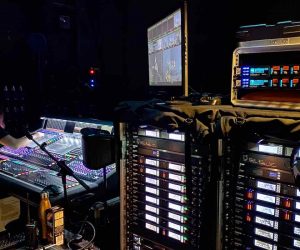





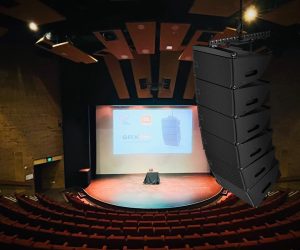

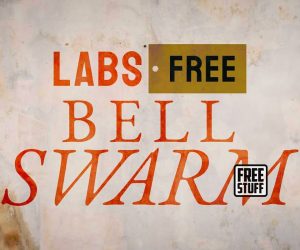

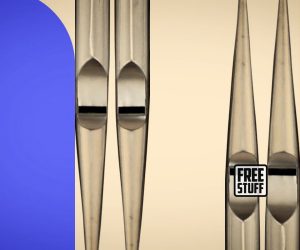
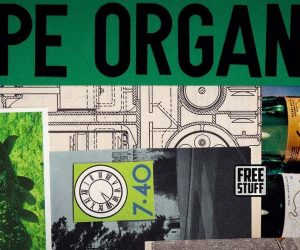


Excellent article! To be honest, I struggled with the mix the first couple of listens. At times is felt like the bass was too loud, highs were clear but the mids seemed muddy. Being a fan of the Church for 20+ years, it was not the first time I had felt this intitally on the first listen to their latest, so I continued to give it more spins. Listened in the car, home stereo, portable Bose during a candle lit bath, etc. and as usual eventually the songs became infectous and I kept spining it. I know the density and atomosphere they produce in the studio is a major task for engineers to deliver on, so props to all involved! This article gives great insight to the process!
Great article! I feel like I need to read it again for all the interesting tech details. F/D is my favorite record for 2014, and as a Church fan of nearly 30 years, I”d say it’s a serious contender for my favorite of their records.